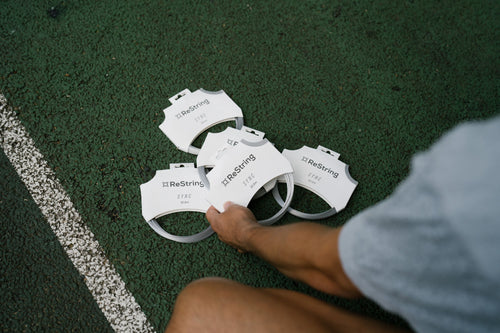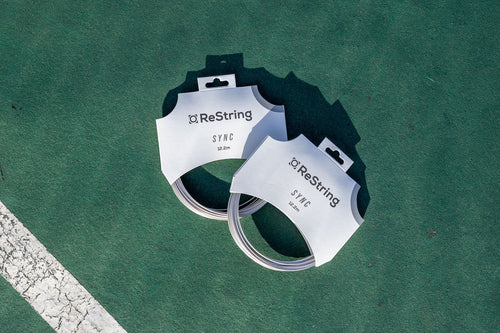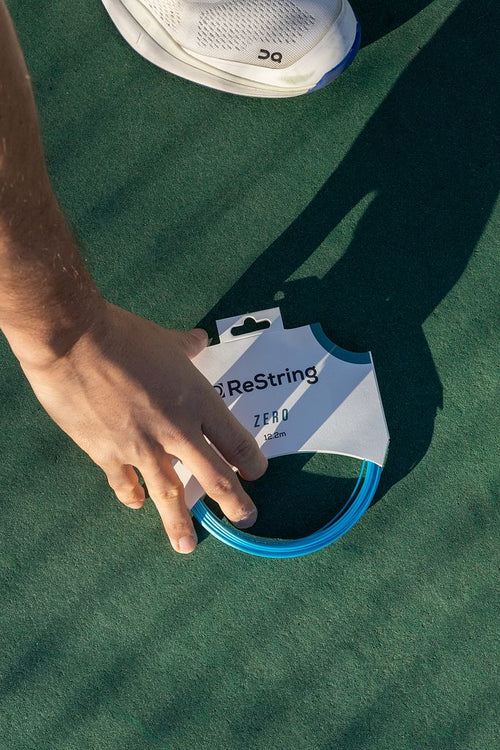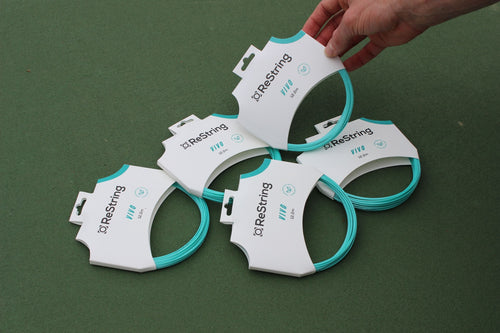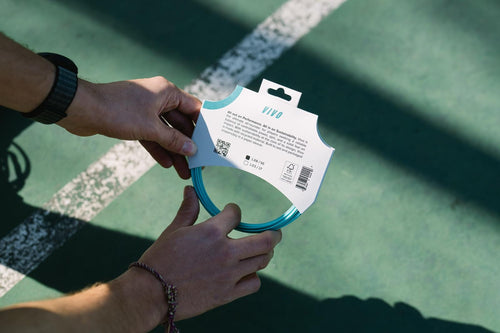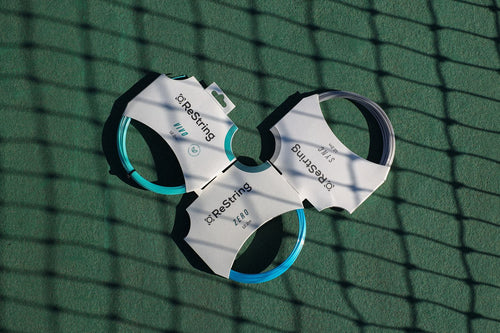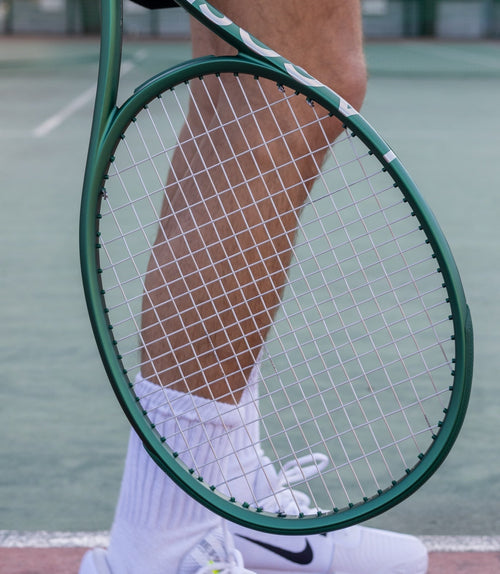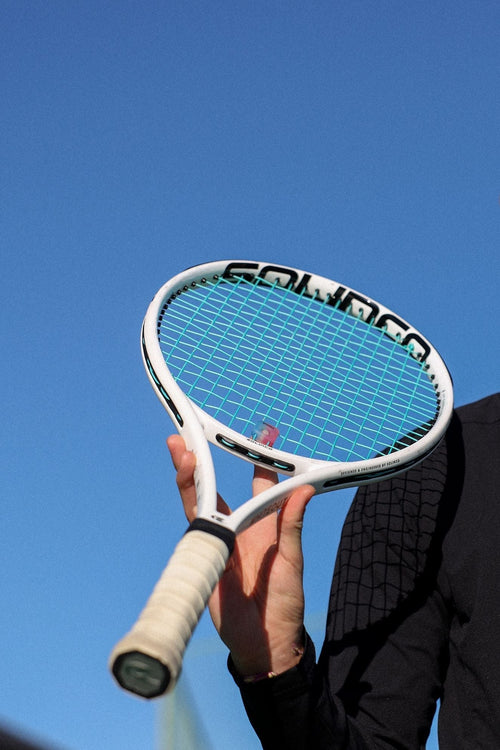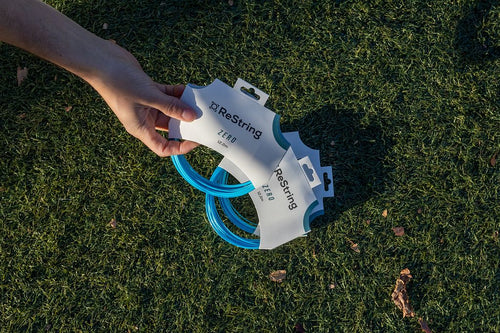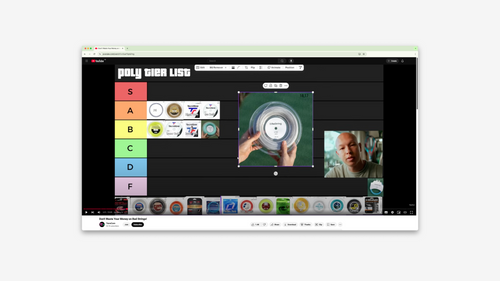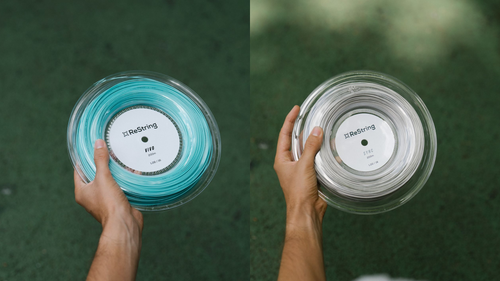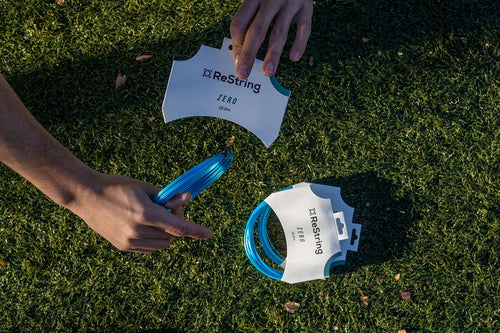ReString's Superior Tension Maintenance: Play Better for Longer
Juan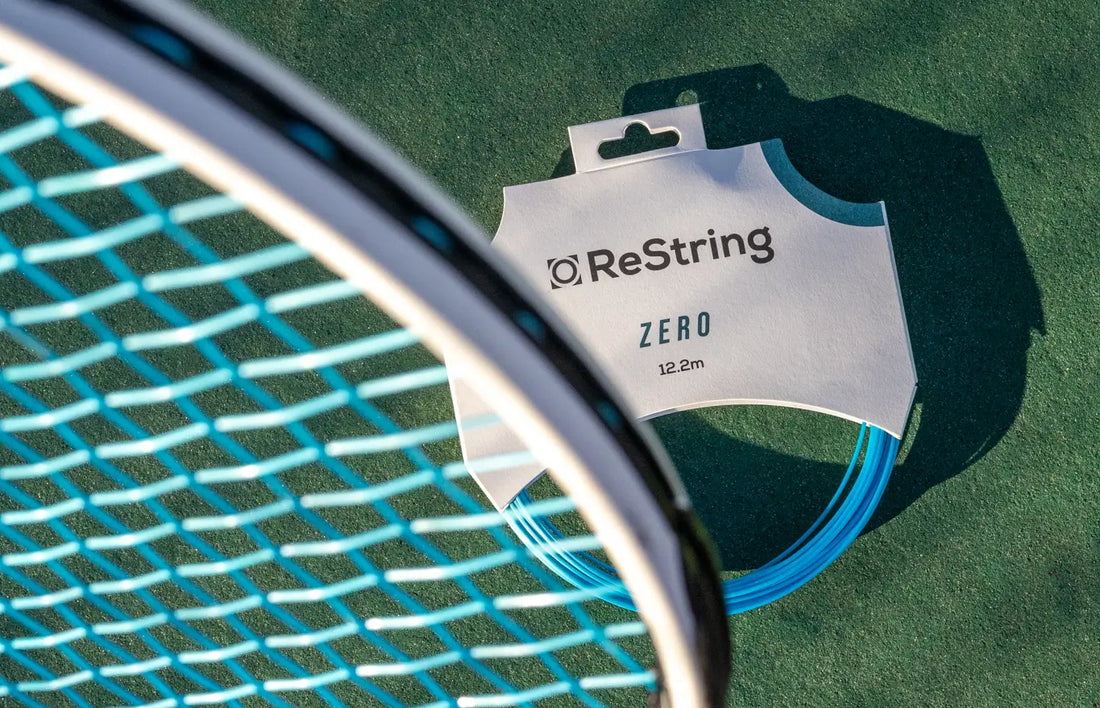
It’s match point.
Your opponent floats a second serve, and in that moment, you see your opportunity. As you load up for what should be a perfect return - the kind that usually paints the baseline with precision - something feels off.
The ball connects, then sails long into the back fence, taking your chance of victory with it.
The culprit? It's not your technique. It's those aging strings that have slowly betrayed you.
In this article, you'll discover how ReString's innovative technology in Zero and Sync solves both tension loss and performance degradation, helping you maintain consistent play for longer than ever before.
What is Tension Maintenance?
Tension maintenance is how well your tennis strings hold their original tightness and playing characteristics over time.
When you first string your racket, you pull the strings tight to a specific tension. However, they don't stay that way forever. All strings naturally lose tension through use, which changes how your racket feels and performs.
Think of tension loss like a rubber band that's been stretched and held. Over time, it becomes looser and less responsive. When your strings lose tension, you'll notice several changes in your racket.
The stringbed feels mushier and less crisp. Your shots may fly longer than intended because the strings have less control. The sweet spot can feel smaller, making it harder to hit clean shots consistently.
This matters because inconsistent string tension forces you to constantly adjust your technique to compensate. You might find yourself holding back on shots you'd normally hit with confidence, or struggling to generate your usual power and spin.
Tension maintenance is your string's ability to stay tight over time, directly affecting how consistently your racket performs.
Maintaining Tension Isn’t Enough
Tennis strings can hold their shape and tension really well, but they can also quickly lose the performance characteristics that make them special.
You can think of it like scissors that still cut after a long time but have lost their sharp edge. They may still function, but not with the same precision and effectiveness they once had.
This is where the real challenge of string performance becomes clear. Even when strings maintain stable tension, their playing characteristics naturally degrade with age.
The string surface becomes worn and slick, reducing your ability to generate spin. The strings also move around more frequently, taking longer to snap back into position.
Ultimately, although they have remained tight, your strings no longer deliver the crisp, consistent response you expect and rely on to play at your best.
A string can stay tight but still lose its edge, just like a dull blade that no longer cuts cleanly. You need performance to last too.
You Can Count On ReString
ReString's advanced string technology solves both the tension maintenance and performance degradation problems that limit traditional polyester strings.
When you string with Zero or Sync, you get consistent performance that makes your tenth hour of play feel as good as your first. There's no gradual decline in playability - just the same reliable response you experienced when the strings were fresh.
Zero keeps its explosive power and spin characteristics intact, while Sync preserves its precise feel and accuracy.
This combination of lasting tension and sustained performance has made ReString the choice of ATP pro Will Woodall and WTA player Cristina Bucsa. These pros rely on these strings in high-stakes matches where consistency is essential.
Their success on tour validates what recreational players have discovered: ReString delivers performance that stands up to serious play.
ReString's technology delivers professional-grade consistency from the first serve to the last. Tour players who can't afford performance drops trust it.
FAQs
What tension should I initially string at?
We recommend stringing between 45-55 pounds (20-25 kg). If you play with Zero or Sync, try stringing about 2 pounds lower than your usual polyester string tension. This lower tension helps you experience the full benefits of the strings' superior snapback while maintaining excellent control.
How often do I need to restring Zero or Sync?
Based on customer feedback, players have said that Zero and Sync maintain their performance well over 20 hours of play. This extended playability means you can focus on your game without constantly monitoring string condition.
Conclusion
Tennis string performance isn't just about maintaining tension. ReString's innovative technology ensures both tension and performance stay consistent through many hours of play.
This means you get reliable power, spin, and control without constantly adjusting your technique to compensate for declining strings.
Experience the difference of lasting performance with Zero for power and spin, or Sync for control and feel. These are the same strings trusted by ATP and WTA professionals.

